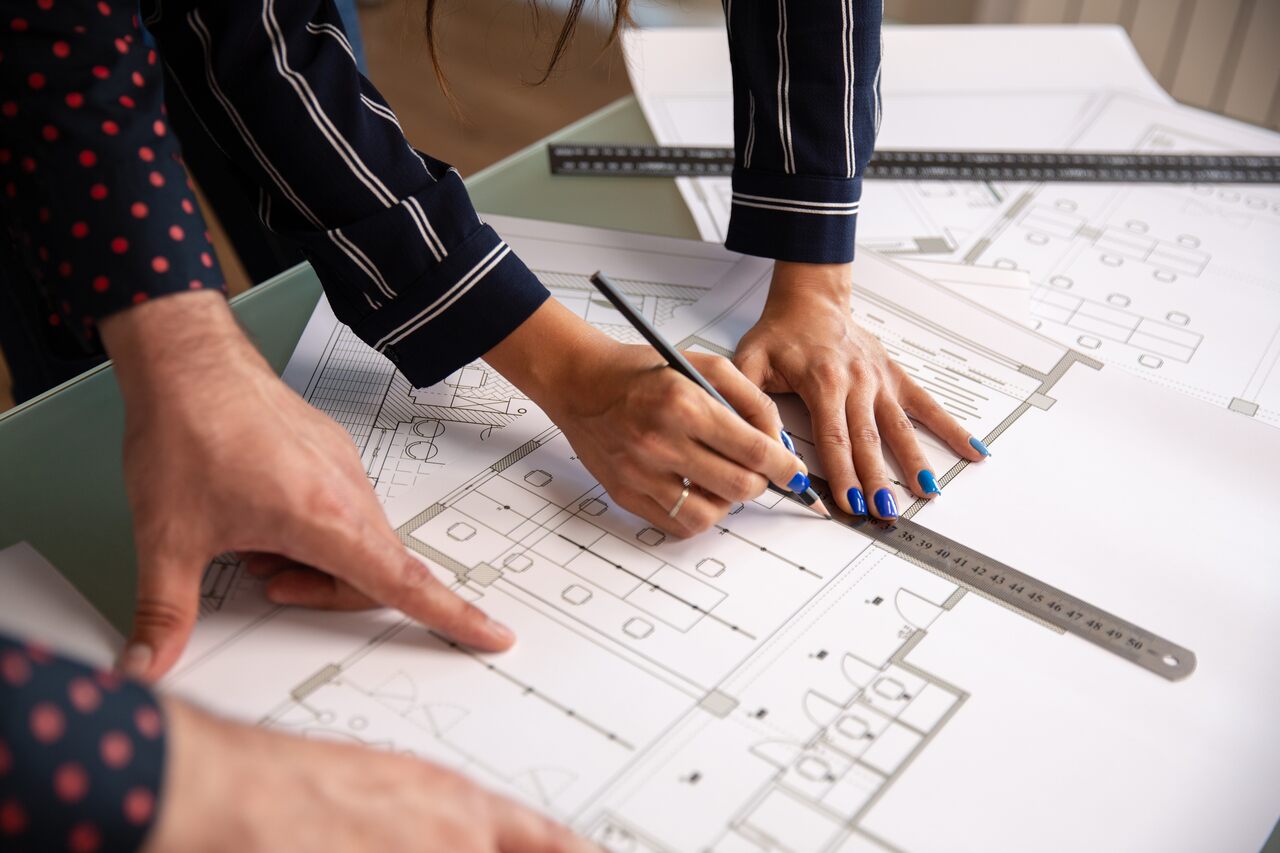
The Thirteen Conditions of Accreditation in Architecture Programs
December 14, 2023
In the bustling world of architectural education, the National Architectural Accrediting Board (NAAB) stands as a central figure, driving standards and shaping future architects. While each institution flaunts its unique flavor in teaching style and curriculum, they all adhere to a set of stringent conditions defined by the NAAB. These “thirteen conditions of accreditation for professional degree programs in architecture” are the pillars that uphold the quality of architectural education across the United States.
With an increasingly globalized society, these guidelines not only ensure that programs meet the bare minimum, but also push them towards excellence and relevance. These conditions span from a program’s response to NAAB perspectives to its efforts towards fostering a healthy studio culture. But what exactly do these conditions entail, and how do they shape the architecture programs we see today? Let’s take a deeper dive into each of these critical conditions.
Join thousands of students who are acing their Architect Exams!
Condition 1: Program Response to the NAAB Perspectives
The NAAB’s perspectives on architectural education serve as a guiding beacon for architectural programs. As the first condition of accreditation, programs must demonstrate their responsiveness to these perspectives and their relevance to modern society. They are urged to address crucial themes such as sustainability, societal responsibility, and the evolving needs of the profession.
Understanding Sustainability
The program must instill in students the principles of sustainable design. This involves the integration of energy-efficient technologies, green building techniques, and an understanding of the environmental impacts of architectural design.
Promoting Social Responsibility
Architects shape the built environment, which, in turn, greatly influences the lives of people and communities. Programs must thus promote a deep understanding of social responsibility, emphasizing the architect’s role in fostering inclusive and humane habitats.
Adapting to Changing Needs
The architectural landscape is not static. It morphs with technology, societal trends, and the broader economy. Accredited programs must remain agile, adapting their curricula to incorporate these shifting needs and advancements.
Condition 2: Program Self-Assessment Procedures
Continuous improvement is at the heart of excellence. The second condition of accreditation, therefore, requires programs to engage in a cycle of regular self-assessment, data collection, and analysis. By rigorously scrutinizing student performance, faculty qualifications, and program outcomes, programs can uncover areas that need improvement.
A systematic self-assessment process helps the program to define the issues accurately, develop corrective measures, and monitor the effectiveness of these strategies. Ultimately, it ensures that the program stays on its toes, never allowing complacency to creep in.
Condition 3: Public Information
Transparency and accessibility of information are vital for prospective students and stakeholders. As the third condition, programs are obliged to provide accurate, comprehensive details about their curriculum, faculty, facilities, and student performance.
This entails publishing a detailed catalog, elucidating the program’s objectives, admission prerequisites, and degree requirements. Also, through their website and promotional materials, programs must make this information readily available, fostering a culture of informed decision-making.
Condition 4: Social Equity
Promoting social equity is the fourth condition for accreditation. It goes beyond mere compliance, demanding a real commitment to diversity, equity, and inclusion. This means programs must actively strive to recruit and retain a diverse student body and faculty. They must provide support services for underrepresented groups and infuse the principles of social justice into their curriculum.
Recruitment and Retention
Programs are encouraged to foster a diverse and inclusive atmosphere by attracting students and faculty from various backgrounds. This diversity is instrumental in promoting a more comprehensive and multi-faceted understanding of architecture.
QUICK TIP…
Don’t just passively read or watch your study materials. Engage with them by taking notes, discussing with peers, or teaching the content to someone else. Active engagement can boost comprehension and retention.
Support Services
Institutional support for underrepresented groups is essential. Programs should provide resources and services tailored to the needs of these groups, making architecture education accessible for all.
Social Justice in the Curriculum
Architecture can be a powerful tool for social justice. Programs must highlight this in their curriculum, nurturing architects who can leverage their skills to build a more equitable society.
Condition 5: Studio Culture
A well-established studio culture, one that encourages collaboration, creativity, and critical thinking, is a hallmark of quality architectural education. As the fifth condition, programs are expected to foster a nurturing and supportive learning environment in their design studios. They must also provide opportunities for students to engage with the broader community, offering an expansive learning experience.

Condition 6: Human Resources
Qualified faculty and staff are the cornerstone of any successful program. The sixth condition emphasizes the importance of having faculty members with appropriate academic and professional qualifications. Furthermore, the number of faculty and staff must be sufficient to support the program’s educational mission.
Condition 7: Human Resource Development
Supporting faculty and staff in their professional development is vital. As the seventh condition, programs are required to offer opportunities for continuing education, research and scholarship, and collaboration.
With faculty engaged in continuous learning and research, programs can stay on the cutting edge of architectural thought and practice, benefiting students through an enriched curriculum.
Condition 8: Physical Resources
Appropriate physical resources form the foundation for effective learning. The eighth condition mandates that programs possess adequate facilities, equipment, and technology to support their educational mission. From well-equipped design studios and computer labs to specialized facilities, the resources provided should not only meet minimum requirements but also encourage creativity and innovation.
Condition 9: Information Resources
As the ninth condition, programs must provide access to and effective utilization of information resources such as libraries, archives, and digital media. The training of students in research methods and information literacy is crucial, setting the stage for lifelong learning and professional growth.
QUICK TIP
Don’t just passively read or watch your study materials. Engage with them by taking notes, discussing with peers, or teaching the content to someone else. Active engagement can boost comprehension and retention.
Condition 10: Financial Resources
Adequate financial resources are vital for the smooth operation of an architectural program. As such, the tenth condition requires that programs secure sufficient funding to maintain facilities and equipment and support their educational mission. Programs should also ensure that tuition and fees are reasonable and that financial aid is available to students who need it.
Condition 11: Administrative Structure
Effective administration is key to any successful program. As the eleventh condition, programs must establish an administrative structure that supports their educational mission, ensures compliance with accreditation requirements, and enables clear decision-making processes and governance.
Condition 12: Professional Degrees and Curriculum
The twelfth condition stipulates that programs offer a curriculum that readies students for professional practice in architecture and culminates in a recognized degree. It’s imperative that the curriculum covers the skills and knowledge required for professional practice, along with opportunities for practical experience such as internships.
Condition 13: Student Performance Criteria
Finally, the thirteenth condition necessitates that programs establish and utilize criteria for evaluating student performance. These standards help ensure that graduates are equipped with the necessary knowledge and skills for professional practice in architecture.

Wrapping Up
Understanding and navigating these thirteen conditions of accreditation can be daunting. That’s where PrepArchitect steps in. Our resources aim to make the journey smoother, providing you with comprehensive guides and learning materials, curated by seasoned professionals. With PrepArchitect, prepare to ace your architecture program and step confidently into your professional journey. After all, the architect’s role is not merely to build structures, but to shape the future.
Take the first step with PrepArchitect today and reshape your architectural future!
